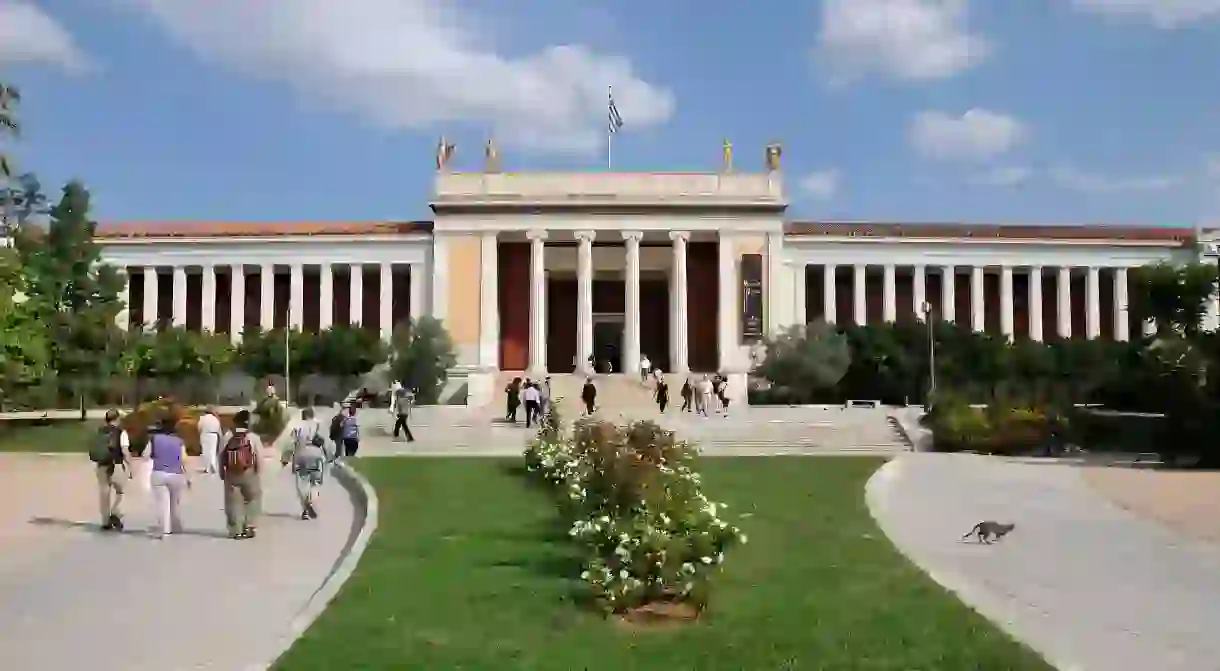Archaeology and Illusions: The 10 Best Museums To Visit in Athens

There is probably no better place to plan a museum day than Athens. Discover the city’s most captivating museums and learn about the Greek capital’s rich history and culture.
History buffs can bask in Greek heritage in the form of priceless artefacts from distant eras, while those looking for something unusual will delight in quirky exhibits. From ancient sculptures and Medieval churches to modern art and optical illusions, the Athens museum scene has it all.
National Archaeological Museum
Museum, Library

Acropolis Museum
Museum

National Historical Museum
Museum

Closer to modern Greece, the National Historical Museum covers the events that followed the fall of Constantinople, all the way through to World War II, with an emphasis on the period preceding the Greek War of Independence. Housed in the country’s former parliament building, with its historic assembly hall still intact, the museum features an extensive collection of personal items belonging to famous politicians, kings and leaders of the Greek Revolution. “Visitors flock to see [general and revolution hero] Theodoros Kolokotronis’s famed helmet,” says curator and communications manager Giorgos Nikolaou. The chest containing chief naval officer Konstantinos Kanaris’s actual heart doesn’t go unnoticed either.
Byzantine and Christian Museum
Museum

Numismatic Museum
Museum

If you want to marvel at one of the largest coin collections in the world, pass by the Numismatic Museum, which showcases 500,000 numismatic items – mostly coins and medals from the 14th century BC up until today. Coins from the sixth and fifth century BC belonging to Roman emperors or Greek kings and rulers are sure to astonish you, as you follow the history of coinage, room by room. Adding to the experience is architect Ernst Ziller’s Neoclassical building, which was once the home of pioneering archaeologist Heinrich Schliemann.
Benaki Museum
Museum

Museum of Cycladic Art
Art Gallery, Museum, Shop

Basil and Elise Goulandris Foundation
Art Gallery, Museum

Art connoisseurs Basil and Elise Goulandris had a vision: to someday house their precious collection of artworks in one single building. In 2019 their dream came true, taking the form of a 1920s Neoclassical mansion displaying 180 works, carefully chosen by the couple themselves. One of the greatest private collections to be assembled in the course of the second half of the 20th century, theirs features modern and contemporary artists, covering the period between 1880 and 1980: Cézanne, Van Gogh, Monet, Degas, Picasso, Miró, Giacometti and Chagall, to name a few. End your visit with a delicacy from the museum’s charming café on the mezzanine floor.
Tactual Museum
Museum
Forget about those annoying ‘do not touch’ signs. A different type of museum, one of just five of its kind worldwide, allows visitors to experience history and art in a new way: through their sense of touch. Founded by non-profit organisation the Lighthouse for the Blind of Greece, the Tactual Museum features exact, tangible replicas of prominent Greek artefacts found in other national or international museums (such as the Venus de Milo), thus bringing the country’s heritage closer to people with sight problems. “Everyone needs the beauty and serenity that a work of art can offer,” says social care administrator Georgia Mila. “And thanks to this museum, everyone can access it.” Admission is free for the blind and visually impaired.
Museum of Illusions
Museum
If optical illusions and mind tricks are your idea of fun, then the Museum of Illusions should be high on your Athens to-do list. Stand in a room that’s upside down, shrink in size or become a giant, or play a game of cards with yourself. “There are lots of fascinating exhibits, like the chair that doesn’t look like a chair until you take a photo of it from the right angle,” says museum manager Panagiotis Papanikolaou. “My personal favourite, though, are the holograms behind the glass, especially the one who’s ‘shooting’ at you and you see that bullet almost passing through.”













